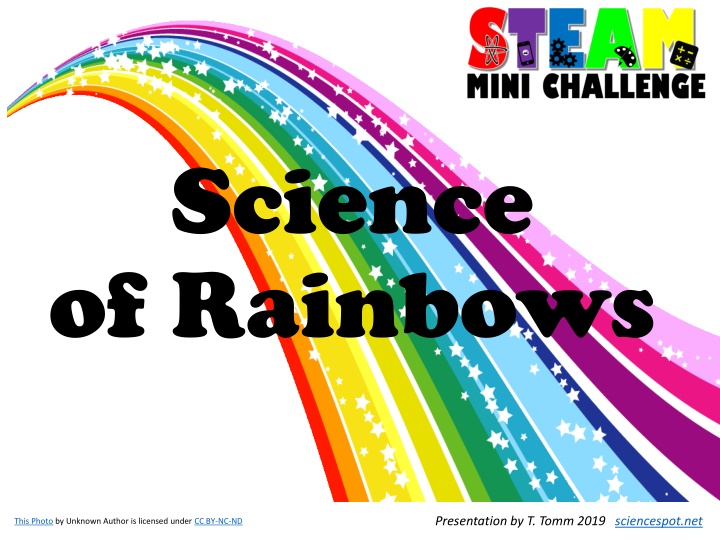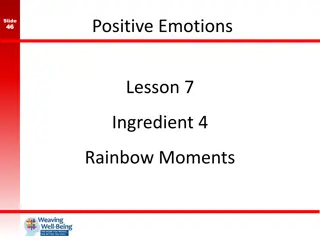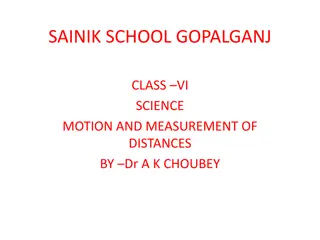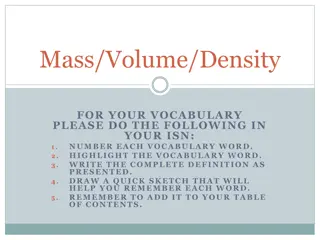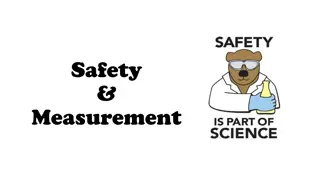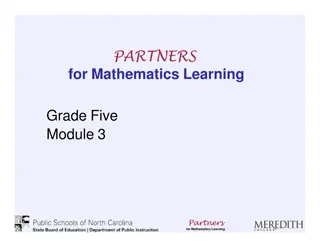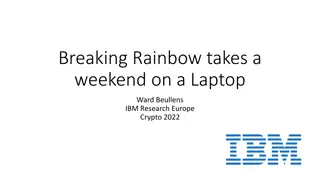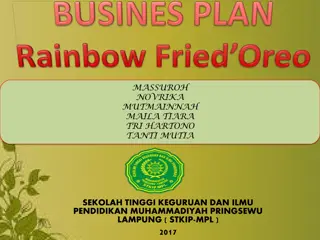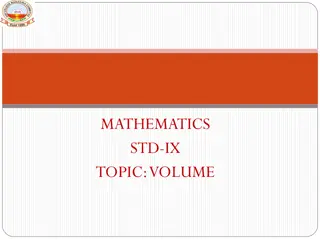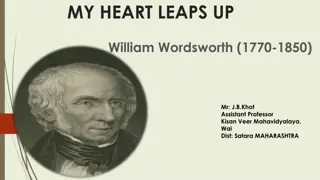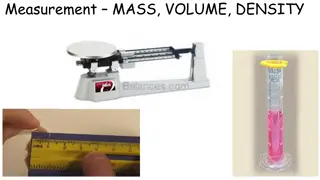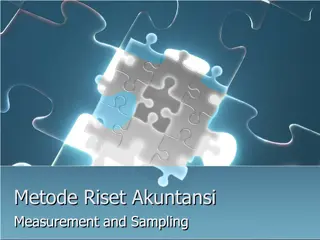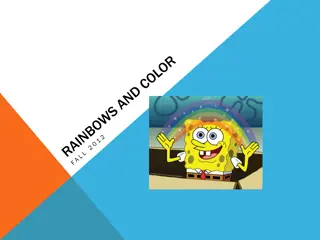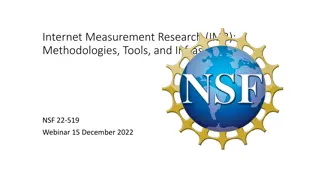Exploring Volume Measurement and Rainbow Science
Uncover the mysteries of volume measurement using graduated cylinders and the science behind rainbows, ROYGBIV, and more. Engage in a measurement challenge with test tubes and colored water, and delve into the formation of rainbows alongside topics like white light, sun dogs, and moon dogs. Extend your learning with a hands-on activity involving color wheels and water-soluble markers.
Download Presentation

Please find below an Image/Link to download the presentation.
The content on the website is provided AS IS for your information and personal use only. It may not be sold, licensed, or shared on other websites without obtaining consent from the author.If you encounter any issues during the download, it is possible that the publisher has removed the file from their server.
You are allowed to download the files provided on this website for personal or commercial use, subject to the condition that they are used lawfully. All files are the property of their respective owners.
The content on the website is provided AS IS for your information and personal use only. It may not be sold, licensed, or shared on other websites without obtaining consent from the author.
E N D
Presentation Transcript
Science of Rainbows Presentation by T. Tomm 2019 sciencespot.net This Photo by Unknown Author is licensed under CC BY-NC-ND
Measuring Volume We will be using graduated cylinders to find the volume of liquids and other objects. Read the measurement based on the bottom of the meniscus or curve. When using a real cylinder, make sure you are eye-level with the level of the water. What is the volume of water in the cylinder? _____mL What causes the meniscus? A concave meniscus occurs when the molecules of the liquid attract those of the container. The glass attracts the water on the sides. Top Image: http://www.tea.state.tx.us/student.assessment/resources/online/2006/grade8/science/images/20graphicaa.gif Bottom Image: http://morrisonlabs.com/meniscus.htm
Part A: Measurement Challenge Materials for EACH GROUP: Dry erase marker 6 Test tubes w/ rack (carry by the base) 3 small cups 1 with red, 1 with yellow, and 1 with blue water 2 Graduated Cylinders 2 Eyedroppers Challenge: Follow the directions on the next slide to complete this challenge. Measure carefully accuracy is very important to get the correct results. Before we begin Put the test tubes in each spot A, B, C, D, E, F Fill the small beakers with colored water red, yellow, and blue.
Directions: 1 Measure 19 mL from the beaker of red water and add to A. 2 - Measure 18 mL from the beaker of yellow water and add to C. 3 - Measure 18 mL from the beaker of blue water and add to E. 4 - Measure 4 mL from C and pour into D. 5 Measure 7 mL from E and add to D. Mix. 6 Measure 4 mL from the beaker of blue water and add to F. 7 Measure 7 mL from the beaker of red water and to F. Mix. 8 Measure 8 mL from A and pour into B. 9 Measure 3 mL from C and add to B. Mix. Done? Show your teacher and then complete the chart on your worksheet based on your results.
Part A Continued 2. Data Chart 3. How did your results compare to other groups? 4. Why was accuracy important in this lab?
Science of Rainbows What is ROYGBIV? How do rainbows form? What is the importance of 42 ? What exactly is white light? Look it up What are sun dogs? What are moon dogs? Video Link: https://www.youtube.com/watch?v=5pYnC-ONdXQ This Photo by Unknown Author is licensed under CC BY
Extension Activity: Color Wheels Materials: Water soluble markers red, yellow, blue Filter paper 1 circle per person Beaker of water with eyedropper Directions: 1. Place three dots in the center of the filer paper as shown above. 2. Place the filter paper on top of a cup 3. Add THREE drops of water TO THE CENTER of the paper one at a time waiting a few seconds between drops. 4. Continue adding drops of water one at a time until the water reaches the edges of the paper. 5. After the water has reached the edge of the paper, record your observations on your worksheet.
Discuss It 1. What were your results? Explain using words and diagrams. 2. Work with your tablemates to write a definition for each with examples. Primary colors Secondary colors Image: https://www.open.edu/openlearn/science-maths- technology/science/chemistry/separate-coloured-ink-experiment
Challenge: Cool Colors C:\Users\Tracy\AppData\Local\Microsoft\Windows\Temporary Internet Files\Content.IE5\7MESSNV1\MC900432653[1].png Which cool color challenge will you try? Watch the video to get ideas. You may work with a partner. Bring the materials you ll need to class tomorrow and be prepared to share it with your classmates. Discussion Questions: 1) What did you observe as you completed your experiment? 2) How did you experiment compare to the one in the video? 3) In scientific terms, explain your observations.
